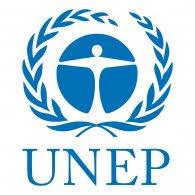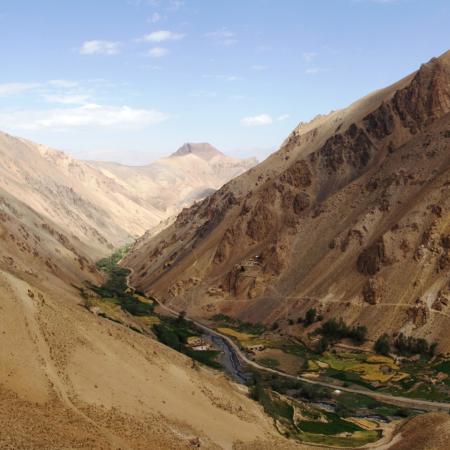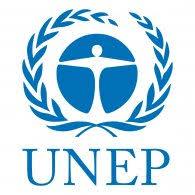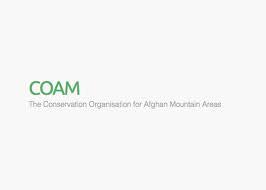
Applying Ecosystem-based Disaster Risk Reduction (Eco-DRR) for the sustainable and resilient development planning in the Koh-e Baba mountains, Afghanistan

The project aimed to reduce flood and avalanche risks and increase resilience in a mountain region in Afghanistan by promoting improved ecosystem management through a bottom-up landscape approach. Green and resilient development plans were first created. In 7 villages, tree nurseries were established and 235,380 tree cuttings were planted in selected hazard-prone areas to reforest and rehabilitate degraded slopes. Capacity on sustainable management and DRR was also built at the local, provincial and national level.
The project took an Eco-DRR approach by addressing hazards (flood and avalanche risk), exposure and vulnerability to disasters through land use planning, ecosystem-based measures and disaster preparedness. The hazards and impacts involved are climatic hazards which are increasing due to climate change. Thus the ecosystem-based measures put in place also enable adaptation. While sustainable environmental management activities are both EbA and Eco-DRR, the framework is Eco-DRR.
Context
Challenges addressed
Extreme temperatures, heavy snowfall, flooding, avalanches, droughts and landslides impact lives, crops and livestock as well as infrastructure. The vulnerability of communities is exacerbated by environmental degradation resulting from unsustainable land practices, increasing population and poor land use planning. The main project challenges were how to integrate Eco-DRR into local development planning in Afghanistan at different levels, the lack of public land, which meant working with private landowners.
Location
Process
Summary of the process
The project has four main components. The foundations for this work lies in mainstreaming Eco-DRR into local and national development planning (building block 1), which allows the planning and implementation of Eco-DRR field interventions (building block 2). Strengthening local and national capacity (building block 3) along with supporting provincial and national advocacy on Eco-DRR (building block 4) enables the potential to sustain (future) implementation and replication of Eco-DRR measures.
Building Blocks
Mainstream Eco-DRR into local and national development planning processes
The project designed a Green and Resilient Development Planning template to be used at the village level, and proposed a model to scale up local planning to integrate ecosystem and disaster to the landscape level. Community-based mapping, GIS modelling and remote sensing assessments were undertaken to better understand the current and historical changes in disaster risk, ecosystem health and land use, while taking climate change into account. A visioning assessment with the local community was also conducted to better understand the community’s development needs.
In the template, the planning process starts with a thorough examination of existing physical, social, cultural, religious, and socio-economic conditions, as well as identifying and locating key hazards and disaster prone areas through community consultations, field visits, and local expert knowledge. Once the information is collected, communities are encouraged to discuss and identify local development priorities with respect to livelihoods, village development, disaster prevention and improving community resilience. A village development map, accompanied by a short report explaining the findings, development goals and strategies make up the final plan.
Enabling factors
The project realized it would be more useful to embed the development planning process of the project into institutionalized, local development processes. Due to some challenges with this (see lessons learned), the project took advantage of the location of the seven target villages, which were within the boundaries of the Shah Foladi Protected Area, and influenced the design of the protected area management plan to scale-up the ecosystem-based measures within the larger landscape.
Lesson learned
One of the challenges faced by the project was how best to support the integration of Eco-DRR elements in local development planning in Afghanistan. While the project started by creating the green and resilient developments plans to be used within the project, it decided to influence the existing development planning process under the Government’s National Solidarity Programme (NSP). However, the NSP is currently under revision, and a new NSP process is being worked out at the national level. Therefore, the project was unable to embed green and resilient development planning into the NSP. However, it has put everything in place so that this can happen in the future.
Field interventions at the village level
In each village, four main interventions were carried out:
- Creation of community tree nurseries
- Tree planting/reforestation
- Creation of community resilience centres
- Local capacity building on Eco-DRR activities
These activities aimed to restore tree cover on slopes and riverbanks around the villages in order to reduce flood risk, while at the same time provide direct livelihood benefits to targeted households and stakeholders in the project. Establishment of community centres and disaster preparedness procedures aimed to reduce exposure of households by providing shelter from extreme winter conditions. The project also promoted replication and scale-up of Eco-DRR activities within Koh-e Baba, in order to sustain field interventions beyond the project’s three-year lifespan.
Enabling factors
The relatively stable security situation in Bamyan Province, and the long-standing collaboration between UNEP, Conservation Organization for Afghan Mountain Areas (COAM) and the target villages facilitated the implementation and monitoring of field activities.
Lesson learned
Field interventions at a much larger geographic and time scale would be necessary to provide evidence of actual flood risk reduction, which was beyond the scope of this project. Therefore the intention was more about having field demonstrations of well-known ecosystem-based measures that have been proven effective in other field research and in the scientific literature to demonstrate their potential in high mountain areas of Afghanistan.
A number of challenges will constrain further uptake, replication and scaling-up of the approach in the country. These include limited capacity of National and Local Governments, lack of access to public land for community ecosystem-based activities, and the need to demonstrate clear economic benefits of such activities to provide local incentives for replication. Indeed there was initial resistance to using private land for nurseries, but by the end of the project there was demand to replicate nursery establishment once the benefits were seen.
Develop local and national capacity for Eco-DRR
The project invested significantly in building capacity for Eco-DRR implementation. Firstly, awareness raising for different audiences (communities in the project area, government, university and other local and national audiences) was conducted by various means such as radio, conferences, workshops, factsheets and posters, 3D model and video.
Secondly various workshops on Eco-DRR implementation were undertaken at the local level to instruct on nursery management, early warning and preparedness, community resilience centre management, as well as trainers training. Field demonstrations and practical trainings at the provincial and national level served as a basis for strengthening Provincial and National Governments’ understanding of Eco-DRR practice in order to sustain future implementation and replication of Eco-DRR measures.
Finally, the project involved universities in Afghanistan in national and provincial EcoDRR conferences and trainings, in an effort to mainstream Eco-DRR concepts and practical knowledge in university programmes.
Enabling factors
Having a long standing relationship and working with local organizations and actors is important for a good communication strategy and enabling capacity building. Furthermore, additional funding enabled a learning exchange to promote Eco-DRR and CCA in the region between Afghanistan, Tajikistan and Kyrgyzstan.
Lesson learned
Dialogue, involving stakeholders and working with local organizations, having a local pilot demonstration project and investing heavily in strengthening capacity are key for sustainability.
Support provincial and national level advocacy on Eco-DRR
This component aimed to promote ecosystem based measures and disaster risk reduction in Afghanistan where such work is budding only nationally. The project therefore identified entry points such as climate change adaptation work and promoted the overall concept of disaster risk reduction in the country with ecosystem-based measures as an integral component of DRR.
Enabling factors
Through its field interventions and multiple local, provincial and national-level trainings and workshops, the project sparked national dialogue on the effectiveness of ecosystem-based measures to achieve sustainable and disaster-resilient development. The project was timely because it provided a tangible experience of Eco-DRR in Afghanistan, which helped inform national policy dialogue leading up to the adoption of the new global framework on DRR.
Lesson learned
The project has influenced national policy and programmes by promoting Eco-DRR as an integral component of DRR in humanitarian and disaster management activities, as well as by integrating EcoDRR in climate change adaptation activities. However high turnover of staff in government positions has been a limiting factor in efforts to build capacity and support policy advocacy on Eco-DRR. For instance, UNEP’s efforts to promote Eco-DRR in the 5-year Provincial Plan of Bamyan were undermined by a change in Provincial Governor and multiple temporary assignments to this position, which resulted in long delays in the development of the Provincial Plan. However, the national trainings and conferences ensure that capacity is built within technical government staff.
Impacts
Flood hazard and consequent erosion is mitigated by planting trees on degraded slopes and stream/river banks in upper watershed villages. Furthermore the planting of fruit trees and sales from tree nurseries increased food security and income in the villages.
Green and resilient village development plans, including detailed risk and landuse maps, allow ecosystem and risk sensitive planning that can be up-scaled to the valley and landscape. This also allows development away from hazard prone areas and to identify areas of changes in ecosystem health, reducing exposure and vulnerability to climatic hazards.
Finally the community is better prepared for disasters while having new capacities to reduce risks of these occurring and increasing their resilience.
Beneficiaries
Seven high mountain villages comprising of a total of 1317 people were the main beneficiaries of the project. However, the project also benefits the Bayman Province and Afghanistan with increased Eco-DRR capacities including within national planning.
Sustainable Development Goals
Story

The communities of seven villages in Koh-e Baba Mountains, with the help from a local NGO and UNEP funded by the European Commission, created green and resilient village development plans that can connect with larger valley and landscape plans. An integral component of the plans was the establishment of baselines and databases to inform land-use planning. This included community-based participatory mapping, ground surveys, remote-sensing and GIS modelling which provided the basis for planning field interventions.
Field interventions included creating tree nurseries (willow, poplar and fruit trees) and tree planting for soil stabilisation and flood management on slopes and besides streams, as well as the creation of community resilience centres (safe shelter areas and training space) and village disaster preparedness teams along with capacity building in all these areas. Because of the absence of public land, private land had to be selected in each village and the nurseries are therefore managed as private businesses with social benefits. This also helps improve the economic status of villagers since fruit trees provide larger income than wheat or potatoe.
Over two years, a total of 235,380 cuttings of trees were planted in selected flood prone areas across the seven villages. People in the communities have also expressed their appreciation for the aesthetic value of greener villages.
Finally, the project also invested significantly in strengthening local and national capacities for Eco-DRR implementation through awareness raising, local and national training and workshops, hands-on learning activities at the field sites, mainstreaming Eco-DRR into university programmes and field visits and study tours both in the country and in the region (learning exchanges between Afghanistan, Tajikistan and Kyrgyzstan).










